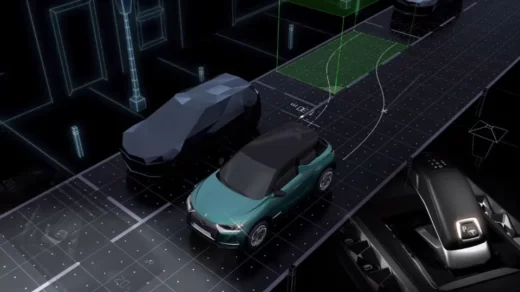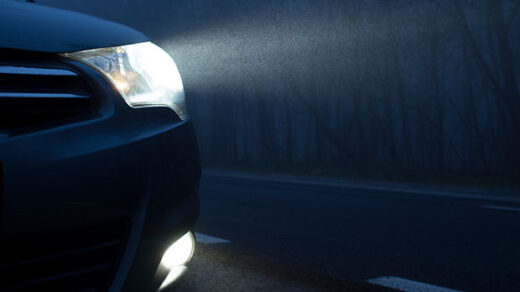Potential hazard zones include parking lots. There’s always something hiding amid the parking spaces, from drivers backing up without looking, to walkers darting between cars, to shopping carts roaming free.
What to do if you scratch a parked car? If you’re a responsible person, you should respond to a parking lot collision in this manner.
Table of Contents
Five Steps If You Scratch A Parked Car
- Don’t run away after the damage has been done, to start. In addition to being unethical (remember the Golden Rule), it may have been seen on surveillance cameras, which might result in a hit-and-run charge.
- Find the owner of the car you damaged first, then. Check back in a few minutes to see whether the owner emerges from the shop and approaches the car. If no one is there, go inside and speak to a staff member, ideally in customer service, while having the car’s details (make, model, and color) paged over the speakers.
- Get a pen and paper and write a note with your name, your phone number, an apology, and an explanation of what happened if you can’t find the owner of the damaged car. Don’t give out any delicate personal information that a bystander could steal. Then, affix the note in a safe location away from wind and water. Most people store it, depending on the weather, under a windshield wiper, via a window opening, in a door handle, or taped to the car.
- Take pictures of both vehicles before you leave and make a note of the details of the damaged vehicle (license plate number, make/model, special features, etc.). In case the owner of the car decides to deliberately do further harm to their car in an effort to extort more money from you, you need to take precautions.
- You can jointly decide if involving your insurance providers is the best course of action after talking with the other party (depending on the severity of the damage). No matter how bad the damage or collision, you might still need to report it to some insurance carriers.
- You ought to probably report it to the police if it is more serious than a scratch. Even while the majority of law enforcement agencies won’t physically attend the site, they could nevertheless collect your information for an accident report. Additionally, you might ask a security person who is on duty in the parking lot to document the incident.
What Occurs If You Scratch A Parked Car And Then Continue Driving?
You might receive a call from the police if you don’t stop. There might be CCTV or eyewitnesses who can attest to your presence. Make sure to leave your information or report the event, even if you smashed into a car at night on a desolate street. If not, you risk being charged with driving recklessly, failing to stop, and failing to report an accident. That will cost you a significant fine and license points.
Was The Accident Yur Mistake?
You will probably be blamed for the collision if the automobile you hit was parked. If you can show that someone else was largely or wholly at fault for the accident, you might be able to escape liability or at least minimize it. For instance, you might have struck the parked automobile after swerving to escape another car that was speeding, or maybe the car was parked illegally.
If your state does not recognize no-fault insurance, the accident’s perpetrator will be liable for covering your damages. Unless your car is dangerous to drive, you won’t be required by law to fix it yourself.
When You Scratch A Parked Car, Will Your Insurance Increase?
The quick answer is probably if you’re at fault. However, in the end, it will depend on your insurer, your insurance coverage, the severity of the damage, and if you have ever made a claim. Some insurers offer “accident forgiveness,” which prevents rate increases after a single mishap for which they were at fault.
Should you accept a cash settlement? It’s important to remember that most insurance demand that you disclose any accident as soon as possible. They are safeguarded, as are you. However, there are hazards involved when people decide to settle with the other driver out of their own pocket in order to avoid higher charges. The innocent party might later assert, for instance, that you never paid them or that the harm was worse than they initially believed.
The final say on the dangers you’re willing to take rests with you.
Q&A
- Is it illegal to not leave your information after scratching a parked car?
According to Section 170 of the Road Traffic Act, it is unconstitutional for a driver to strike a car without leaving their information.
After damaging another vehicle, drivers are required to pull over and provide their name, address, information about their vehicles, and, if the owner is not there, the name and address of the owner.
- What should I do if someone scratches my parked car and then leaves?
You may pursue a personal injury lawsuit against the hit-and-run driver or file a claim against their insurance if you or the police are successful in identifying them.
The following extra insurance plans may still offer coverage even if you can’t find the hit-and-run driver:
Insurance against uninsured drivers (UM). Damages incurred as a result of an accident involving a motorist who cannot be found are covered under UM coverage.
Insurance for personal injury protection (PIP). Regardless of who is at fault, PIP coverage offers up to $10,000 in protection. PIP coverage for hit-and-run accidents varies depending on the particulars of your policy.
MedPay protection. Regardless matter who is at blame, MedPay coverage covers medical costs. Again, your particular policy determines whether or not MedPay covers hit-and-run incidents.
There is also a thing known as “parked automobile insurance.” You can buy stored car insurance, sometimes known as “storage coverage,” if you only occasionally drive your car or if you leave it parked outside most of the time. This kind of insurance might pay for damage caused by someone who hits your parked car and then takes off, but it typically excludes liability coverage.
Ever scratched a car that was parked? How did you deal with it? Please feel free to share your experience in the section below.



